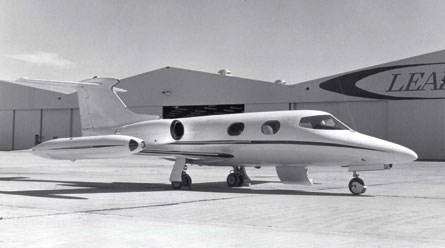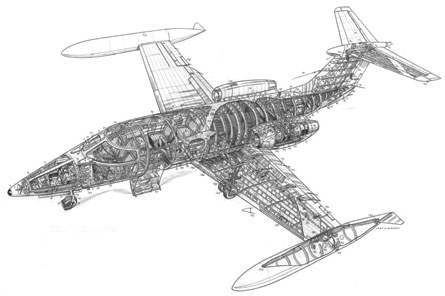Neither the largest nor the fastest, the Learjet Model 23/24 series is the most important business aircraft in history.
Amid the boom of business jet innovators of the early 1960s, Bill Lear's self-financed project captured the imagination of the aviation world like no other among his contemporaries.
A clever mixture of engineering, design and marketing, the founding production series of the Learjet brand over time earned status in the popular lexicon as a substitute for the term "business jet" itself.
Derived from Switzerland's P-16 fighter prototype, the biggest criticism of the Model 23 was perhaps the demands placed on piloting skills. With a 1:2.2 thrust-to-weight ratio, the originally eight-seat jet had enough power to out-climb a North American F-100 Super Sabre.
Lear capitalised on the marketing potential of his product, establishing new records for time to climb to 40,000ft (12,200m) and round-trip speeds between Los Angeles and New York.
When the Model 24 arrived in 1966, Lear dispatched the new aircraft on a round-the-world flight that set 18 aviation records.
 |
|---|
©Bombardier |
 |
|---|
©Cutaway Drawings: John Marsden |
More impressive than the Learjet's engineering and performance are its humble origins. Contemporary rivals such as Dassault, Grumman, Lockheed and North American entered the business jet market in the late-1950s with decades of commercial and military aviation experience. By contrast, Lear started working with the prototype design of a failed fighter jet and little else.
Lear left his retirement and put his reputation - and, not least, his personal fortune - on the line to launch a product for what was then an unproven market.
Although a pioneering inventor of the car radio, the autopilot and other avionics, Lear had never designed an aircraft for series production until the early 1960s with the Model 23.
As one of the last successfully self-financed aircraft, the project required every bit of Lear's entrepreneurial skills.
Lear's risk-taking paid off. With certification financed on a shoestring, Lear decided to skip the prototype stage. The first flight test aircraft was built with production tooling, and was intended to be delivered after certification was complete. This made his decision to leverage the P-16's structural layout, including an eight-spar wing, critical.
Even the Learjet's biggest crisis proved fortuitous. The first aircraft crashed during flight test because the Federal Aviation Administration certification pilot forgot to retract the spoilers on take-off. Instead of dooming the project, the crash actually may have saved it. Lear used the insurance money to finance the remainder of the test campaign.
Source: Flight International
















